When It Comes To RV Generators, How Long Do They Last?
Backup power with a generator is a crucial tool for your RV, whether you’re touring a location where you’ll be knowingly distant from amenities like as external power sources, or you’re having an unexpected power loss where you’re connected up.
You should be able to operate your generator for 8 to 20 hours with a suitably sized generator and battery bank.
8-10 hours should be plenty to fully recharge your batteries for nighttime usage if you have everything set up correctly.
You won’t find onsite electricity at every campground or attraction you wish to visit.
This is particularly true if you want to go boondocking or camping off the grid.
Regardless of your accessibility to shore power or hook-ups, a generator may let you power all of your appliances and contemporary amenities.
But knowing how to buy the right size generator, knowing what they can power, and how long they can run safely is just as vital as having one in your RV.
This page describes the two kinds of RV generators, their working lengths, how to pick the right size and type for your RV, as well as some safety and operation guidelines.
The Different Types of Generators and How Long They Run
A built-in generator and a portable generator are the two kinds of RV generators.
Your RV is equipped with a built-in generator.
It is hooked directly into the electrical system of your RV and is powered by the battery.
They may operate on gasoline, diesel, or propane, and they can get their fuel from your RV’s tank.
As a result, there may not be an exterior tank to fill or a manual set-up.
They’re just a button press away from turning on.
A portable RV generator, on the other hand, is more self-contained.
They have their own fuel supply and are located outside of your RV.
(One that isn’t reliant on your RV’s fuel tank.) Because it is not restricted by where it is stored inside your RV, a portable RV generator provides simpler access.
This might be a propane or gas generator.
There are even some that can run on both gasoline and diesel.
A built-in generator is often housed in a dedicated generator compartment with restricted access from the outside.
Because they are not permanently locked within close proximity to your RV’s windows, a portable generator may also be simpler to ventilate.
It’s critical to be mindful of your generator’s exhaust gases and avoid allowing them to enter your RV.
A portable RV generator, like a built-in generator, runs on gasoline, diesel, or propane.
Some types are dual fuel, meaning they can operate on a variety of fuels.
They often swap between gas and propane.
How long can an RV generator run? The actual run duration of your generator is determined by a number of variables, including its wattage, the overall wattage of what it’s powering, the size of its fuel tank, and the kind of fuel you’re using.
Portable generators may contain anywhere from 1 to 10 gallons of gasoline, depending on their size.
A portable generator can provide 8-13 hours of uninterrupted electricity on average, while built-in generators may provide nonstop power for days with good maintenance.

Is It Safe To Run An RV Generator For How Long?
It’s safe to operate both built-in and portable RV generators for their full 8-24 hours of run time as long as they’re properly vented, have adequate fuel (and aren’t “running on fumes”), and are appropriately equipped for usage in adverse weather.
Why Is It Necessary To Turn Off Generators?
While your generator may be able to operate indefinitely, particularly if it is a built-in generator, there are occasions when it must be turned off.
Limitations of Portable Generators
While a portable RV generator is a valuable tool, it does have its limits.
You may only be able to power the bare necessities, depending on their size.
They have a limited power source and need more frequent shut-down and refueling than a built-in generator.
A portable RV generator, on the other hand, will need manual setup and operation.
Before it can be used, it must be taken from its storage location, connected, and filled with gasoline.
A built-in generator, on the other hand, may be started with a single press of a button.
The majority of generators aren’t built to run continuously.
They do need to take a break.
For run lengths, see your manufacturer’s instructions.
In any case, your local “quiet hours” will most likely take care of this.
When purchasing a portable generator, weight is an essential factor to consider since they come in a variety of sizes.
Consider getting one that is a reasonable weight for you to move.
The bigger and heavier the generator, the more powerful it is likely to be.
Travel Trailers and Fifth Wheels, as well as RVs without their own fuel supply, are often powered by portable generators.
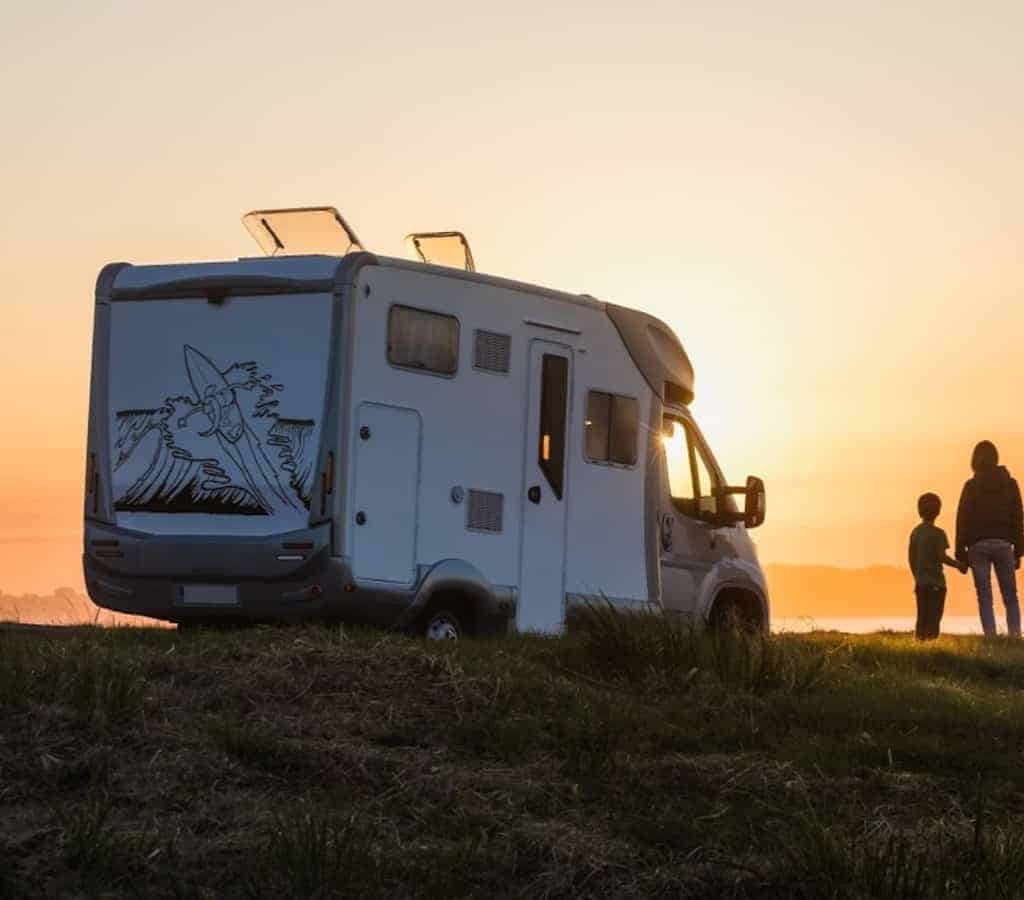
#1. Hours of Silence
When buying a generator for camping, many people look for a model that is quiet.
This is advantageous for both generator users and campsite neighbors.
Most campsites offer quiet hours, or times when you should keep your noise to a minimum in order to be considerate to other campers.
It’s a good idea to figure out what these hours are and stick to them.
It’s crucial to respect the laws of the campsite where you’re staying and to practice campground etiquette.
Everyone at the campsite will have a better time as a result of it.
No matter how quiet you believe your generator is, do not use it after quiet hours.
Never use your generator while overnighting in a Walmart or other retailer’s parking lot.
It is unappreciated and will jeopardize everyone’s gain!
#2. Refueling
Gas generators must be turned off and cooled before refueling.
Gasoline fumes are very flammable, and a single spark may ignite them.
You don’t want to risk burning them with the heat from your generator.
Refueling your RV is as simple as filling it since the built-in generator takes fuel straight from the gasoline tank.
So you don’t mistakenly empty your whole fuel tank, your built-in generator will automatically cut off when your fuel level is down to one fourth of your tank.
Allowing your built-in or portable generator to run out of fuel while running under any load is not a good idea.
This may result in serious damage to your generator and the appliances it is powering.
Because your portable generator has its own gasoline tank separate from your RV’s, refueling it is a bit different.
Allow for a minimum of 10 minutes of cooling time before trying to replenish your generator.
To prevent gas from breaking down inside your portable generator, keep it with an empty fuel tank.
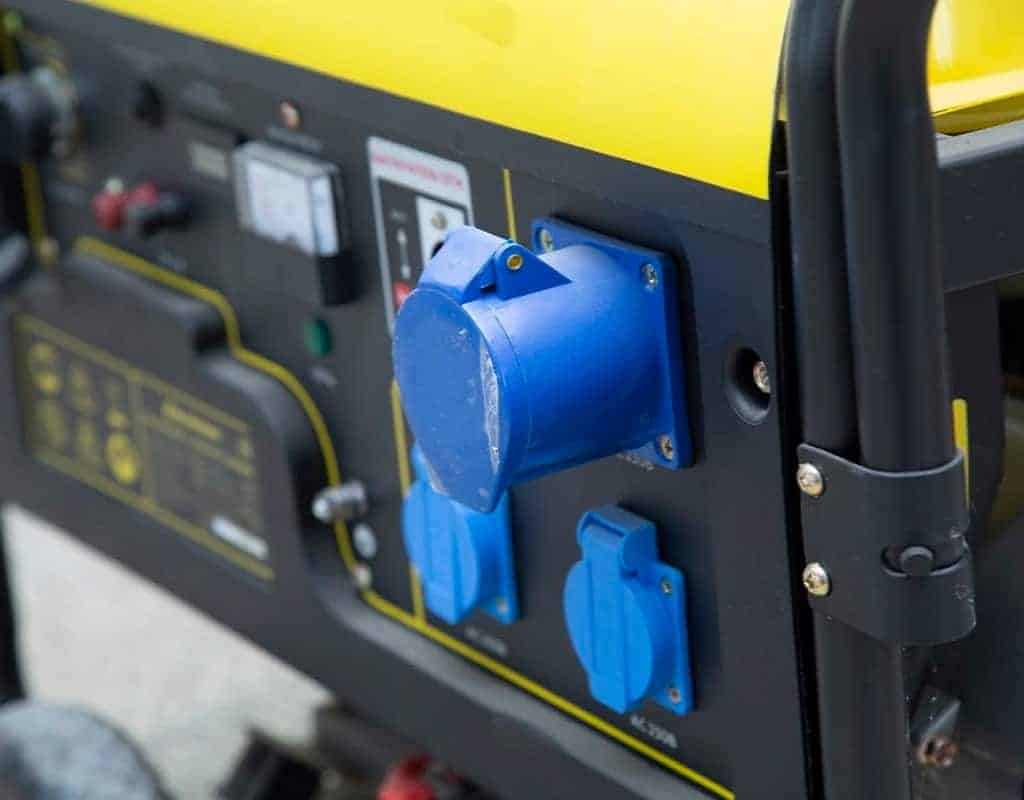
#3. Life Expectancy
Most portable generators have a life expectancy of 10,000 to 25,000 hours, depending on how often they are used and how well they are maintained, whereas built-in generators have a life expectancy of 15,000 to 20,000 hours.
RV generators are meant to endure for years, but both built-in and portable RV generators need regular maintenance to keep them running at their best.
Make sure to replace the oil and filters in your generator on a regular basis, as well as inspect the fuel lines.
Maintaining your generator on a regular basis will help it last longer and function more effectively.
In addition, infrequent usage is a key source of generator difficulties, which may occur in as little as one month.
The fuel, which is mostly gasoline, starts to degrade, become sticky, and obstruct appropriate flow.
This may induce spiking and cause start-up issues.
Every month, operate the generator with at least a 50 percent load for a minimum of two hours.
This also reduces carbon build-up and lubricates all of the engine components, as well as removing any possible moisture build-up.
Your total fuel usage might be reduced if your generator is functioning effectively.
You’ll have to take your complete rig to a technician if your built-in generator needs repair and you don’t want to fix it yourself or have access to a mobile RV repair service.
If your portable generator, on the other hand, has to be repaired, you may transport it alone to the repair shop in any vehicle that has the necessary space.
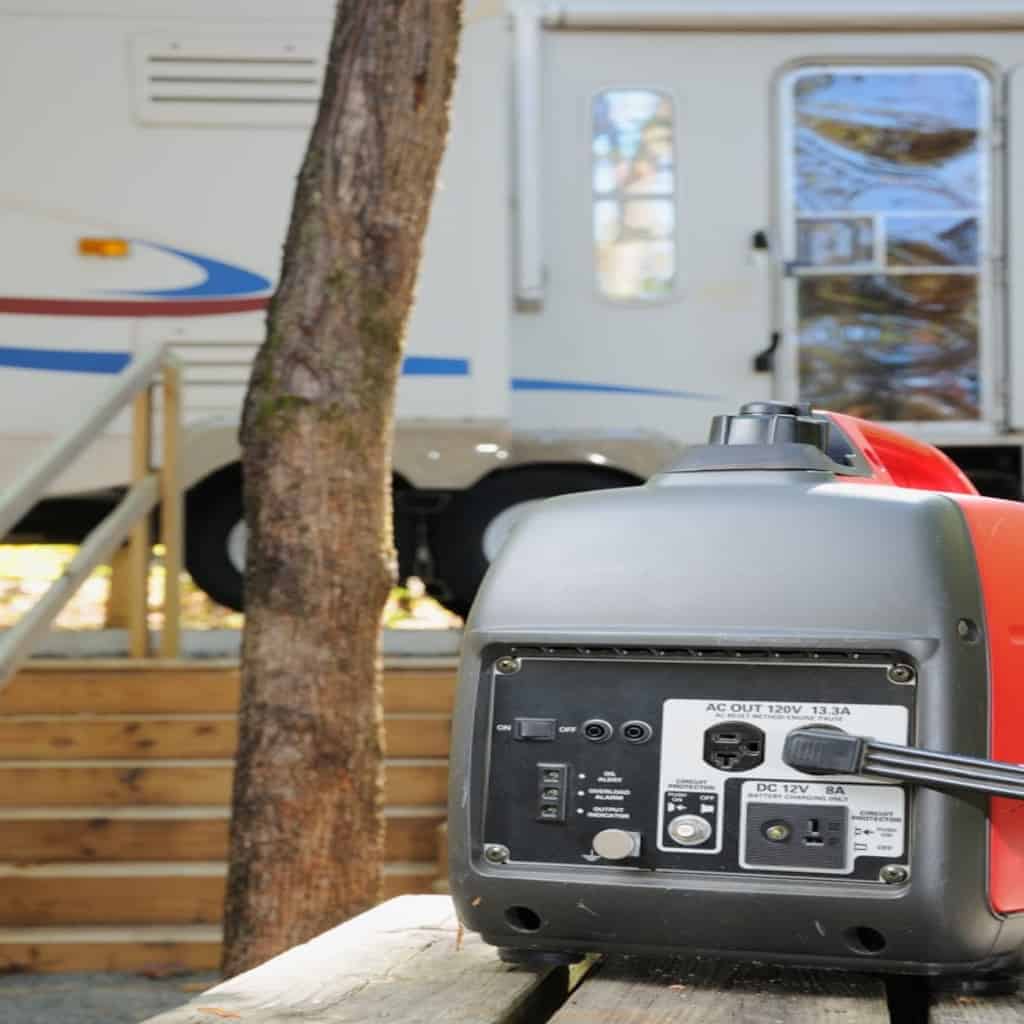
Where Can You Get The Portable Generator You Require?
One of the first steps is to figure out how much physical space you’ll need to store and carry your generator.
It’s pointless to figure out how large of a generator you’ll need if you won’t be able to carry it with you on your expedition since it won’t fit.
Those who have a dedicated compartment often choose a built-in generator.
These compartments are often seen in RVs that would benefit from the addition of a higher-powered, built-in generator.
RVs with several air conditioners or high-wattage freezers are examples of this.
These appliances will need a bigger generator.
Next, figure out how much electricity you’ll need.
Add up the initial wattage needs of all the appliances you want to operate at the same time to get the minimum wattage you’ll need.
Then, to be on the safe side, add a 20% buffer to the total.
The beginning wattage of your appliances, particularly those with a compressor, is substantially greater than the operating wattage.
The watts drawn during startup and shutdown may be doubled or tripled.
An RV refrigerator, for example, needs 400 to 1000 watts of power, depending on its size, while an air conditioner uses 1,400 to 2,400 watts.
During start-up and shut-off cycles, this doubles or triples.
Then, decide on the sort of gasoline you want to use.
This selection may be influenced by a number of things, including the location of your exploration, your set-up, and what makes financial sense for you.
Gas is more costly and difficult to get by, but it burns swiftly.
A dual fuel generator is versatile since it can operate on both gas and propane.
Propane has a longer shelf life and burns more effectively than either gasoline or diesel, but it produces 10% less power.
Diesel generators emit less pollution than gas generators and provide more electricity than propane, but they are more costly.
If your RV has its own fuel source, it’s a good idea to choose an RV generator that utilizes the same kind of gasoline, since this eliminates the need to store and carry numerous fuel types.
Please keep in mind that storing gasoline inside an RV is not advised owing to its flammability.
You may pick a gas, diesel, or propane generator, or even a dual fuel model, after you’ve determined the optimum fuel choice.
If you’re using a portable device, keep in mind that you’ll need to bring extra fuel in the form of a gas can or a propane tank.
Many individuals nowadays opt for a “inverter” generator.
They are often smaller and quieter than regular generators.
They also provide pure “Sine wave” electricity, which is safe for today’s delicate devices.
This comes with a cost, but with little research, you may discover fantastic bargains on superior equipment, such as the Champion “Hybrid” model described below.
Generators We Recommend For Each Fuel Type
ON-BOARD GENERATOR
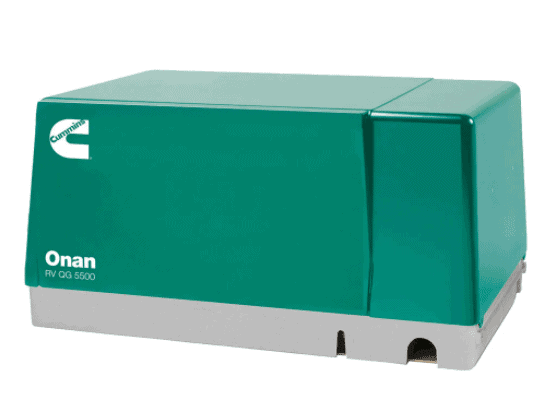
#1. Cummins Onan QG5500
- It plugs right into your computer.
- Its fuel comes from the gas tank.
- Powerful, easy to start, and quiet
- Portable generators are much less convenient than Onan generators.
PORTABLE SMALL
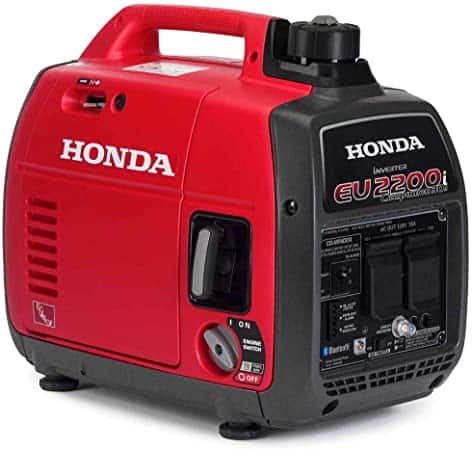
#2. Honda 2200 Watt Gas Generator
- Will power a modest RV, with lights, television, and batteries.
- Honda quality is unrivaled.
- For electronics, an inverter generator provides clean energy.
PORTABLE LARGE
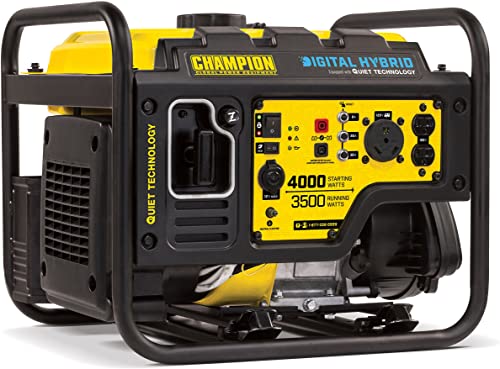
#3. Champion Hybrid 4000 Watt Inverter
- Will power a bigger RV, one air conditioner, lights, TV, and other appliances, as well as charge batteries.
- Minimal decibels and inverter technology at a low cost.
- Gasoline generators are inexpensive.
Dual-Fuel Alternative
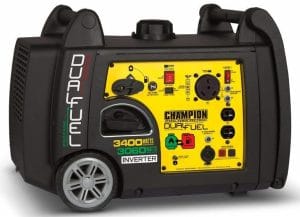
#4. Champion Duel Fuel 3400 Watt Inverter
- 3400 watts of renewable energy delivered in a small container for electronics
- The whole inverter operates in a very quiet manner.
- You may choose to run it on propane or gasoline.
- Propane generators are convenient since they do not need fuel.
Tips for Cutting the Time It Takes to Run and Saving Money
While certain expenses are inevitable while going on an RV journey and using your generator, there are steps you can take to lessen, or at the very least not add to, the total cost of powering your appliances.
#1. Use Major Appliances Only When Necessary
One option to cut down on generator run time is to just use high-power appliances like your air conditioner, refrigerator, and hot water heater on an as-needed basis rather than continually.
Using them sparingly will cut down on the length of time you need to operate your generator, as well as the amount of wattage and fuel used.
While driving with a built-in generator is safe, you should think about how much gasoline you’ll be consuming.
Depending on what you’re powering, you’ll need close to a gallon each hour on average.
Consider just running what you really need if you want to save money and gasoline.
#2. Many Rv Parks Are Next To A Petrol Station.
Propane is used to power the refrigerator and hot water.
Some items, such as your water heater and refrigerator, may be able to function on propane rather of relying only on your generator for power.
By doing so, you may lower the load on your generator and the amount of strain it is under.
This will cut down on the time it takes to run and the quantity of gasoline or diesel you consume.
Using less fuel allows the generator to operate for longer periods of time before needing to be refueled, saving you money.
#3. When Using The Air Conditioner, Keep The RV Closed.
Leaving doors and windows open when operating your air conditioner might be an unintended error that causes your generator to work harder and use more gasoline.
When using your air conditioner, making sure windows and doors are firmly sealed and closed as much as possible is a fantastic method to save electricity.
If you can prevent it, you don’t want to increase your total fuel use.
Check the seals and gaps around windows and doors on a regular basis.
In the long run, a few minutes of maintenance may save you money.
#4. LEDs Should Be Used Instead of Lights
While your RV may have originally been equipped with less costly incandescent or fluorescent light bulbs, LED lights are far more energy efficient, more robust, and have a much longer lifetime.
LED bulls, on the other hand, are 80-90 percent more efficient while utilizing a fraction of the energy.
This helps you save energy and generator fuel by lowering the amount of wattage necessary to power your lights.
Furthermore, if they have a longer lifetime, you will change your lightbulbs less often and spend less money.
Make Use Of Solar Panels.
Solar panels may be beneficial depending on your electricity requirements.
During sunny seasons, a solar system may effectively charge your batteries, reducing or even eliminating the need for a generator.
Is It Possible To Run A Generator While Driving?
While driving, it is safe to use a built-in generator.
In fact, using your built-in generator to power your roof-mounted air conditioner is more fuel efficient than running the dashboard air.
A built-in generator is attached to a particular location, is adequately ventilated, and uses the same fuel tank as your RV, allowing it to operate safely as you drive.
However, using a portable generator while driving is not suggested.
Doing so securely is significantly more challenging.
If your RV is not properly vented, you risk filling it with dangerous carbon monoxide fumes, as well as spilling gasoline or causing other harm to it if it is not securely secured.
It’s just not worth taking the chance.
If you’re worried about the contents of your refrigerator becoming too warm while you’re on the road, use ice coolers or ice packs to keep your food cold.
Summary
While not every camping location will have power hook-ups, owning a generator enables you to be more independent and go farther.
They also help you be more prepared in the event of a power outage.
Built-in generators are more powerful than portable generators and can handle larger wattage demands, whilst portable generators are better suited to smaller rigs with lower power requirements.
The size of the area you have to work with, as well as the overall start-up wattage requirements of the appliances you want to power, are crucial to selecting a suitable generator for your RV and fulfilling your power needs.
Both a built-in and a portable generator will consume close to one gallon of gasoline per hour when operating at full capacity.
The quantity of fuel your generator can contain, the kind of fuel you’re using, and the generator’s wattage all affect the length of time it can operate.
While you may anticipate an average of 8-13 hours of continuous operating time from a portable RV generator and 8-24 hours from a built-in RV generator, there are several easy steps you can do to minimize the running time and improve the life of your generator.
When using a generator, it’s critical to observe safety requirements since there are dangerous carbon monoxide exhaust gases to be wary of, as well as combustible gasoline vapors when refilling.
Following these rules will keep you and your family safe while also allowing you to continue having incredible experiences in your home away from home.
How Long Can a Generator in an RV Run?
Now that you know what to look for in a new generator, it’s time to go shopping.
Talking to your RV dealer about your needs and the sort of camping you want to undertake is a wonderful place to start.
That way, you can ensure that you have enough electricity for your next camping trip.










